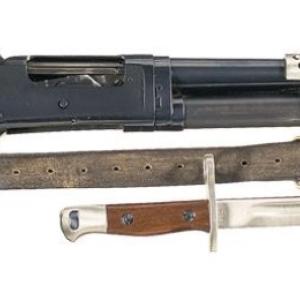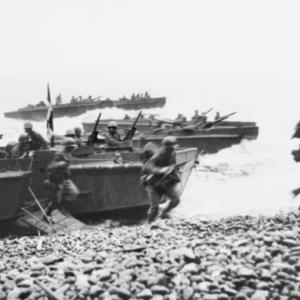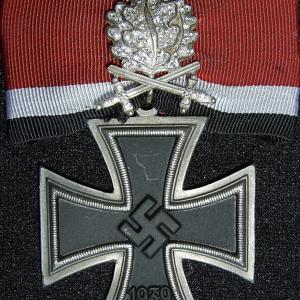
On this day in military history…
On 17 August 1943, the US Eighth Air Force launched one of its most ambitious and costly missions of the Second World War—a dual strike deep into Nazi Germany targeting two critical industrial sites: the Messerschmitt aircraft factory at Regensburg and the ball bearing plants at Schweinfurt. This mission, codenamed "Operation Double Strike," was a defining moment in the strategic bombing campaign over Europe. The dual objective was to disrupt the production of the Luftwaffe’s most advanced fighter aircraft, the Bf 109, at Regensburg, while also striking at the heart of Germany's precision manufacturing capability by crippling Schweinfurt’s ball bearing industry. Ball bearings were vital to nearly every mechanical aspect of the German war machine, and US military planners believed that knocking out this sector would severely hinder German military production.
The mission was devised by General Ira Eaker, commander of the Eighth Air Force, and approved with the support of General Henry "Hap" Arnold, head of the US Army Air Forces. It was bold in both concept and execution, intending to strike two high-value targets nearly 600 miles into enemy territory in broad daylight without the aid of long-range fighter escort for the full duration of the mission. The plan required extreme coordination: the first force, over 140 B-17 Flying Fortresses, would fly southeast toward Regensburg, unload their bombs on the Messerschmitt plant, and then continue to North Africa rather than return to England. The second wave, another group of over 220 B-17s, was to hit Schweinfurt after a delay of several hours to avoid overburdening air defenses along the same route. However, poor weather and delays in takeoff caused the Schweinfurt force to depart late, allowing the German air defenses to regroup and re-engage the second wave after already attacking the first.
Despite extensive planning, the mission met ferocious resistance. German radar had detected the incoming bombers, and the Luftwaffe launched hundreds of fighter planes to intercept them. Without sufficient long-range escort, the B-17s had to rely solely on their own defensive firepower. The air battle raged across the skies of occupied Europe. By the end of the day, the cost was staggering: out of the 376 bombers dispatched, 60 were shot down, representing a loss of over 15%—well above sustainable levels. Of those that returned, many were riddled with bullet holes and barely made it back to base. Over 550 airmen were killed, wounded, or captured.
The Regensburg raid was partially successful. The Messerschmitt plant was hit hard and production was temporarily disrupted, though not for long. Several key assembly lines were destroyed, and the damage delayed fighter production for a number of weeks. However, the real problem was that the bombers did not have the strength to finish the job completely, and the Germans were adept at quickly repairing damaged infrastructure. The Schweinfurt raid had more severe consequences in terms of aircraft losses and was less effective. While bombs did land on the target area, only moderate damage was done to the ball bearing plants. German production was hampered, but not halted. Dispersal of factories and stockpiled supplies helped to offset the blow, and full-scale production resumed within months. US intelligence had significantly overestimated the vulnerability of the German industrial system and underestimated its ability to adapt.
The high losses experienced during this mission forced a major rethinking of American bombing strategy. The myth that tight bomber formations could defend themselves without fighter escort was shattered. The daylight precision bombing doctrine, championed by the Eighth Air Force, came under intense scrutiny. After 17 August, further deep-penetration raids into Germany were curtailed until the arrival of the long-range P-51 Mustang fighters in early 1944, which could escort bombers all the way to the target and back. The legacy of the Schweinfurt-Regensburg mission was thus mixed. It demonstrated the boldness and bravery of the US bomber crews, but it also exposed the vulnerability of unescorted bombing runs deep into enemy territory. The high cost in men and aircraft led to increased pressure on military planners to prioritize the development and deployment of effective escort fighters. In strategic terms, the mission did not achieve the decisive blow that had been hoped for, but it marked a turning point in the air war over Europe and underlined the need for better coordination, intelligence, and support for future missions.










